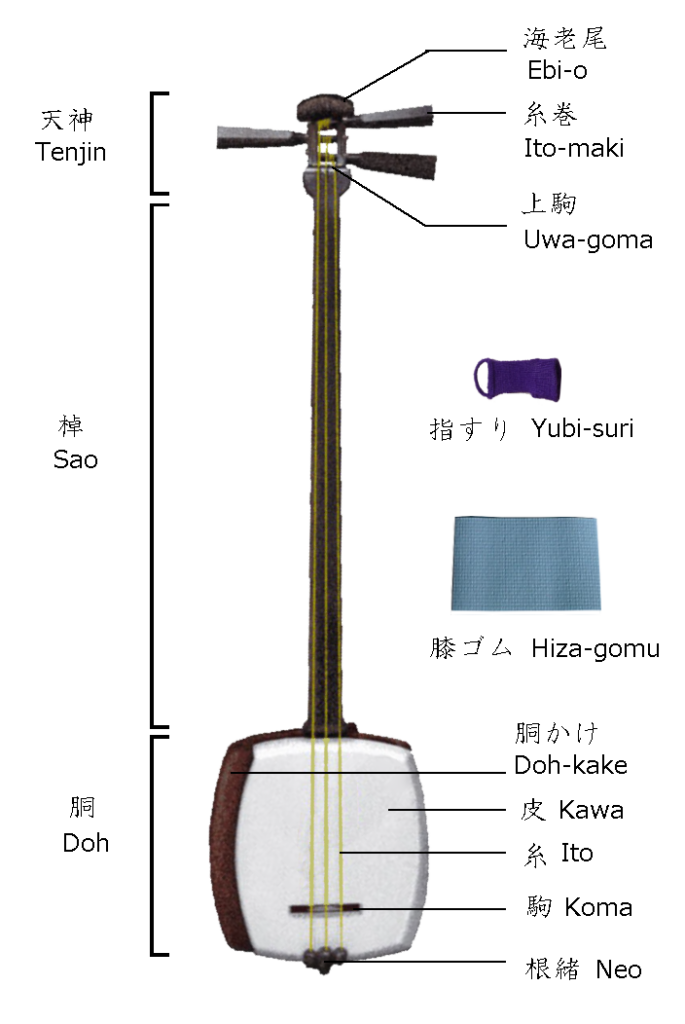
Shamisen
The shamisen is said to have originally come from China. During the Muromachi period, the Chinese "sanxian" was brought to Ryukyu and became the "sanshin." This was later improved and developed as a Japanese instrument, becoming the shamisen.
Types of shamisen
- Futo-zao(thick-neck) Shamisen: Tsugaru shamisen, Roh-kyoku, Gidayu, etc.
- Chu-zao(middle-neck) Shamisen: Min-yoh, Zi-uta, Tokiwazu, Kiyomoto-bushi, Kouta,etc.
- Hoso-zao(thin neck) Shamisen: Nagauta, etc.
Kouta
"Kouta" is a type of Japanese traditional music that originated during the late Edo period. It was derived from "Hauta," which was a form of theatrical music such as "Nagauta," that the common people enjoyed singing themselves. Kouta was established by a performer named Kiyomoto Oyou. The main characteristic of kouta is the use of the shamisen, which plays in a fast tempo, and the singing style is light and witty. It was very popular in Edo at that time.
Characteristics of Shamisen in Kouta
The shamisen is typically played with a plectrum (called "bachi" in Japanese), but in kouta, it is played with the fingers using a technique called "tsumebiki," where the strings are plucked with the fingertips (not the nails, but the fleshy part of the finger).
